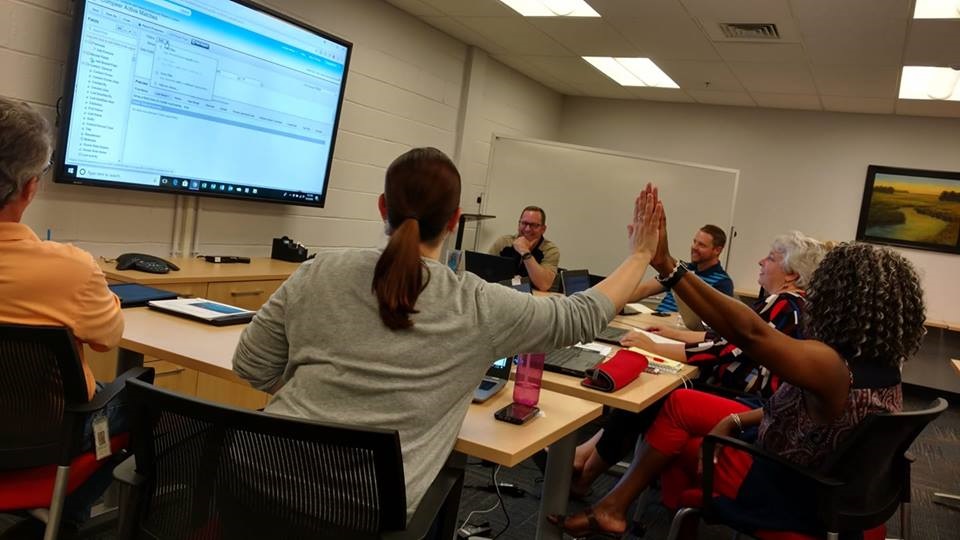 Special to the Philanthropy Journal
Special to the Philanthropy Journal
By Lynda Gonzales-Chavez, Senior Vice President & Chief Diversity Officer, YMCA of the USA
 Nationwide, communities of all sizes are rapidly changing. Neighborhoods are more diverse, societal perspectives and attitudes – influenced by national and global factors – are evolving, and technology is making our world smaller and more accessible. It is imperative that nonprofits develop sustainable strategies to keep pace with a changing society and board diversity is a critical strategy for an organization to remain relevant and effective in advancing its mission.
Nationwide, communities of all sizes are rapidly changing. Neighborhoods are more diverse, societal perspectives and attitudes – influenced by national and global factors – are evolving, and technology is making our world smaller and more accessible. It is imperative that nonprofits develop sustainable strategies to keep pace with a changing society and board diversity is a critical strategy for an organization to remain relevant and effective in advancing its mission.
When considering who will represent and strategically guide your organization at the board level, it is important to think about individuals across all dimensions of diversity. Nonprofits need board members who have the depth and breadth of perspectives, skills and experience to help them navigate changing communities and respond strategically to increasingly complex social, economic and political environments.
A holistic approach towards the greatest possible inclusion across multiple dimensions of diversity is not only helpful to consider in board recruitment, but it is also valuable for existing board members to consider in strategic and fiduciary discussions towards advancing organizational goals. Here at YMCA of the USA, we encourage Ys to use this graphic which illustrates the various dimensions of diversity to consider when assessing how their board reflects and represents the different segments of society. It is important to consider internal dimensions like age, ethnicity, gender, and physical ability, as well as external dimensions like geographic location, income, religion, and education. Allowing people an opportunity to ‘self-identify’ in each of these dimensions is critical. It is also essential to seek a healthy mix of organizational dimensions, such as a person’s professional expertise or organizational level. Finally, we encourage Ys to remember to consider board culture (existing and aspirational) and how to enhance it when recruiting new members.

From Implementing Diversity ©1996. Irwin Professional Publishing. The Diversity Wheel is adapted from Marilyn Loden’s book, “Implementing Diversity.”
If an organization is slow to evolve its board structure and dynamic, it will likely lead to leadership decisions and organizational strategies that are not reflective of, or relevant to, our rapidly changing communities. If an organization is intentional in its board recruitment efforts, the benefits – from both a mission advancement and market impact perspective – can be significant. In my more than 25 years of experience serving on and working closely with boards of local, national and international non-profits, I have seen how boards made up of individuals with diverse backgrounds, perspectives and life experiences complement and constructively challenge one another to help to drive innovation, strengthen governance practices and set a forward-looking agenda through executive hiring and strategic planning decisions.
Below are key considerations for developing a comprehensive, sustainable strategy towards greater board diversity.
Conduct an assessment
- Initiate conversations with your Board Executive Committee to ensure ownership, accountability and leadership
- Conduct an analysis of the existing board to identify strengths and gaps across various dimensions of diversity, experience, skills, etc.
- Overlay board demographics with community demographics (from the U.S. Census and/or other local sources) and identify gaps, considering your target markets
- Share findings with your Board Executive Committee
Identify key partners in target communities
- Identify potential organizational partners (e.g. faith-based institutions, community centers, chamber of commerce, non-profits) in key communities your organization serves (or aspires to serve)
- Build and/or strengthen relationships and collaborative opportunities at an organizational level, and identify key leaders to potentially play an elevated role
- Collaborate with partner organizations to identify key issues and shared solutions that are relevant to the target community
Engage community leaders
- Identify and cultivate relationships with trusted local leaders who have a deep understanding of community need
- Build a working relationship and provide opportunities to expose local leaders to your organization’s mission, community commitment and impact
- Consider how to leverage the expertise of community leaders to enhance board understanding of local issues; and when appropriate, consider inviting these individuals to formally join the board
Develop board functionality towards inclusion in setting strategic direction
- As board diversity grows, adapt practices and build culture and structure to support inclusion of new board members
- Ensure board intentionality towards applying an inclusion lens when setting organizational strategic priorities and practices
- Work to align fiduciary, generative and strategic dialogue with an inclusion lens, and in approaches for strategic planning, CEO selection and evaluation processes
- Provide ongoing training and learning opportunities for all board members to strengthen cultural competencies, leadership effectiveness and a commitment to diversity and inclusion
Create evaluation and feedback opportunities
- Develop an intentional process to ensure the board remains reflective of the community and focused on meeting community need
- Provide consistent, equitable and accessible opportunities for all board members to regularly assess board diversity as well as organizational strategic priorities, impact and outreach to underserved communities
- Ensure development and support opportunities are in place for board members to strengthen diverse, inclusive and global perspectives and competencies
In my experience, prioritizing board diversity is key to achieve organizational goals and for mission advancement. In addition, some of my greatest professional learnings and experiences are from working alongside individuals from different walks of life. By broadening our individual and collective perspectives, we are better positioned to help our organizations become more effective and innovative in tackling the social issues impacting our communities.
Lynda Gonzales-Chavez is responsible for leading the YMCA of the USA (Y-USA) strategic priority to ensure that all segments of society have access to and feel welcome at the Y. A key priority of this work is promoting an inclusive organizational culture that values diversity, strengthens inclusion and fosters community bridge-building. Lynda and her team are focused on organizationally embedding and operationalizing diversity and inclusion practices, building staff and volunteer cultural competencies to engage the most underserved communities and promoting collaborative strategies to ensure that Y leadership mirrors the communities Ys serve.





